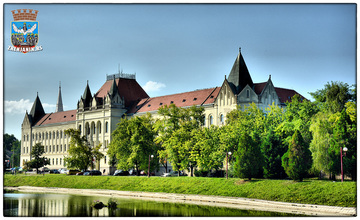Geographical position

Climatic characteristics
The climate in the territory of the municipality of Zrenjanin is transient from low humid to dry climatic type. The ratio between the quantity of precipitation and potential evapotranspiration serves as a measure, which is 0.81 for Zrenjanin. The climate is steppe-continental, a mean annual temperature is 11.2 degrees Celsius and the annual precipitation is around 622 mm. The distribution of precipitation in the seasons is rather uniform, but major deviations are also frequent.
The prevailing wind of this region is the east wind. The speed of the east wind is quite variable. It blows at a speed of 5 – 11 m/sec, but sometimes its gusts reach the speed of as much as 28 m/sec. The east wind blows from the southeastern or eastern direction and it brings relatively warm and predominantly dry air masses. The second prevailing wind of this region is balmy wind from the northwestern direction. It regularly brings rain and snow and provides the entire Vojvodina with the sufficient quantities of humidity. The third significant wind is the northerly wind. It is a cold and frequently rather strong wind. During winter, snow falls on the average for 18 days. Zrenjanin has from 2000 to 2200 sunny hours a year; it has the lowest number of sunny hours in December – 42.5, and most of them in July – 314.
The overall characteristic of all of the climatic elements of this region is reflected in big amplitudes of temperature and in big variations of the values in the course of a year.
According to its seismological and geological characteristics, the territory of the city and of the municipality of Zrenjanin belongs to the regions of rare and moderate earthquakes.
According to the pedological map of Vojvodina, the territory of the city is macroscopically divided into just two pedological categories: the carbonate chernozem in the higher part of the loess terrace and solonetz – saline soil in the valley of the River Begej. However, according to some local pedological investigations that were conducted for certain detailed urban development designs and according to the overall knowledge of the situation, it is more probable that the areas marked on the above map as solonetz are actually the varieties of marshland black soil and smonitza.
 Skupstinagrada Zrenjanina
Skupstinagrada Zrenjanina